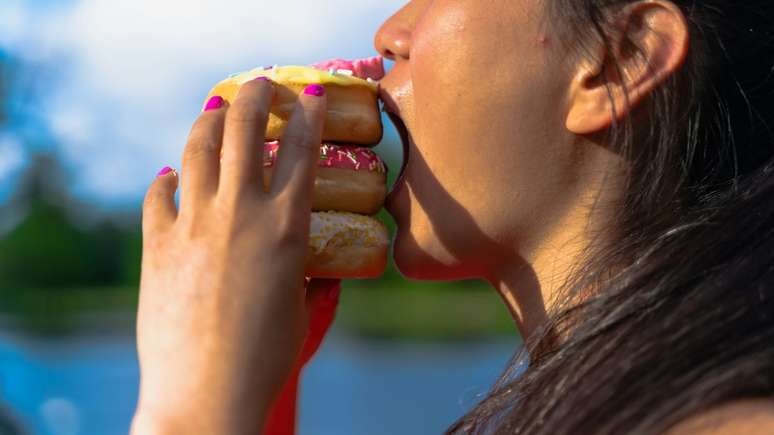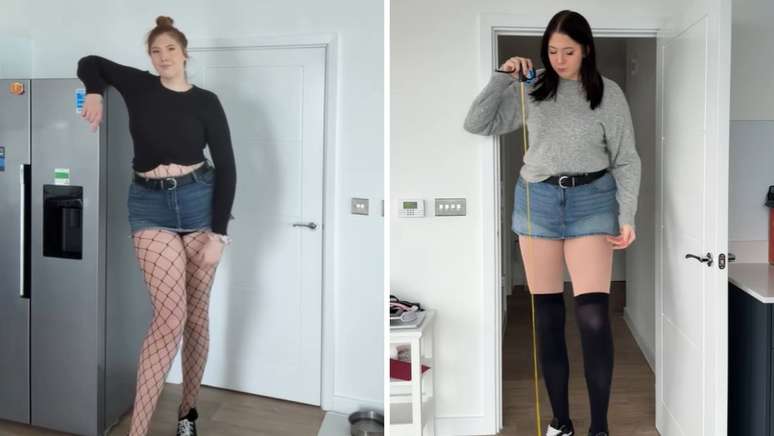For some restaurateurs, the paper menu is an act of resistance and may come back after getting tired of the digital world.

After the covid-19 pandemic, it has become a routine to see people pointing their mobile phones looking for QR codes on restaurant tables, that code that takes you to a digital menu. With it, not only restaurants saw an opportunity to reduce costs, but it was also a measure to avoid contamination with the physical menu🇧🇷 But, after almost three years of the pandemic, consumers are starting to miss paper.
On social networks it is common to see customers complaining about this trend of restaurants that only have a QR Code. A tweet urging President-elect Luiz Inácio Lula da Silva to end digital menus already has more than 50 thousand likes🇧🇷 In responses to the comment, Twitter users argue: some say it’s a technology that’s here to stay, another says he stopped going to restaurants because his cell phone doesn’t read QR Codes.
The fact is that, in the meantime, some restaurants have put their foot down and returned to physical menus, the ones you can hold, feel and browse through. At Chou, for example, Gabriela Barreto does not offer digital menus. For her, who is educated in letters, the physical menu has a unique importance: to describe the dishes, so that they “sound” appetizing. The digital menu, for Gabriela, loses a little grace and charm.
“Our menu has been the physical format pretty much the same for almost 15 years. It’s a clipboard with sheets. It’s always been important to have a template to print at home, as we have a menu that comes and goes frequently. Season, work with fresh things. Don’t have beetroot? Take it off,” explains Gabriela al taste🇧🇷 “Also, when you have your phone in your hand, you get distracted. A message appears and you exit the menu. There is no focus. This, in Chou, is something that affects the experience.”
A menu to tell stories
Another restaurant that focuses on a physical menu is Shuk, which serves Middle Eastern street food. “We have a menu with a QR code, but we hate it. We hide it,” says Mauro Brosso, designer and one of the partners of the maison. According to him, the menu was an essential part of the restaurant’s communication at the very beginning of the establishment, when they proposed to serve this food, which is very different from what is seen in Arab cuisine restaurants.
“The way we organize the categories in the menu explains why we thought about our concept. This is not possible with the digital menu,” explains the restaurant’s partner. “It’s a different reading moment on a mobile. On digital, you don’t have a point of focus. If you want to see the drinks, you go straight there, then you have to scroll back to see the dishes. On the physical, it’s different. The menu is function. After all, he has to guide the customer through the restaurant experience, provide agility, answer questions. He’s a supportive waiter.”
More than a guide, Shoshana Delishop, opened after the start of the pandemic, sees the physical menu as a point of communication between the home and the consumer. While Chou and Shuk aim for simplicity in their physical menus, so that the customer can make the entire “loop” through the menu with a single glance, Shoshana finds space to explain the origin of the fish cake or, even, the differences in home operation.
“We imagine the menu as a landscape where you can see everything at once,” explains one of the partners, Benjamin Seroussi. Shoshana does not and will never have, depending on her wishes, a QR Code menu – no wonder, the house does not even offer delivery, as it values exchanges between people in the environment. And Benjamin, showing how he doesn’t like digital at all, warns: cell phones are killing the restaurant experience.
“The restaurant is a bodily experience. Then the person enters the restaurant, sits down and takes out the cell phone? I’m here to talk, point out things on the menu, ask the waiter. That’s part of the experience,” explains Benjamin. “I think it’s sad, in fact, that people go to a restaurant and the first thing they do is pick up their cell phones. Having a printed menu breaks it down and makes the overall experience more interesting.”
And the cost?
Recently, in an interview with Paladar, chef Erick Jacquin proudly spoke about his menu at Lvtetia, an Italian house that passes through Jacquin’s French gaze – and a few meters from the trendy Président. Like everything else in the house, which was studied in detail by the MasterChef judge, the menu was also designed by him, who doesn’t even know if there is a menu with a QR Code. “Do we have a digital menu? Really?”, asked the chef, questioning the house manager who was at his side. “I don’t know why. I like the physique.”
On the cover of the menu there is a very amusing visual mess: to reflect the proposal of the house, there are Asterix, Obelix and Pope Francisco. It is a combination of two paintings which are on the wall of Lvtetia which also represent the menu. “It’s something that costs money, but there’s no escape. It’s another experience to pick up the menu, feel it,” says Jacquin. “I myself love going to restaurants and taking the menu home with me. I have some on display at the Président.”
It is the same bet of chef Tsuyoshi Murakami, who runs the restaurant that bears his surname. Here, the customer takes home the omakase menu at the end of the experience. “It’s something that takes work. Every day we make the menu on good paper. But we also believe it’s a way to build customer loyalty. If he takes it home, he’ll remember the day he came here. We never thought of stopping with that,” said chef al taste🇧🇷
With this, even if the physical menu seems to be engaging in a battle very similar to the one that books have been waging for some years with digital editions, chefs are following the wave of social networks and betting on the long life of paper menus. “I don’t think it will replace digital, but it coexists. The QR Code started out as a necessity, but I think it was temporary. I don’t know if it’s generational, but most of the people we talk to, who are in the industry, like the printed menu. I think the menu is back to stay, again,” he says.
But it’s always good to remember that expression: “not so much at sea, not so much on land”. Gabriela Barreto is no exception to Chou’s physical menu. But at Futuro Refectório, another house with her at the helm of the business, things are different. “There you can do everything on your mobile phone. See the menu, choose, pay,” she explains. “It depends a lot on the experience that the restaurant wants to offer. This is the important thing in choosing the format”.
🇧🇷The best content in your email for free. Choose your favorite Terra newsletter. Click here!
Source: Terra
Benjamin Smith is a fashion journalist and author at Gossipify, known for his coverage of the latest fashion trends and industry insights. He writes about clothing, shoes, accessories, and runway shows, providing in-depth analysis and unique perspectives. He’s respected for his ability to spot emerging designers and trends, and for providing practical fashion advice to readers.






-to4mi28diwq8.jpg)

